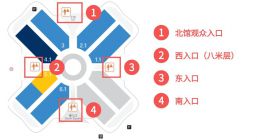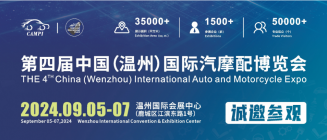Scan QRCode

The world has more than 20 countries, hundreds of vehicle factories and parts companies shut down production
Under the epidemic situation, the pressure on the global automobile industry chain increases
COVID-19 outbreak brings a lot of uncertainty, the global automotive industry supply chain is no longer stable, import and export two-way pressure.With the further consolidation of the good situation of epidemic prevention and control in China, the resumption of production of domestic automobiles and parts is gradually approaching or reaching the normal level, and the pressure of the automobile industry chain and supply chain is also easing.Experts suggest that while maintaining the stability of the industrial chain and supply chain, China's auto industry should master core technologies to form a competitive advantage in the upstream and downstream industrial chain.
Dongfeng motor group co., ltd. announced that Renault intends to transfer its holding of dongfeng Renault 50% of the equity to dongfeng motor group, dongfeng Renault to stop Renault brand related business activities.
The impact of COVID-19 added to the already sluggish auto industry.From vehicle manufacturers to parts manufacturers to dealers, the global automotive industry chain is under great pressure.
Pressure on global industrial chain
Automobile production involves tens of thousands of parts. It has a long industrial chain and a high degree of globalization, which makes it difficult to leave the support of the global industrial chain.
"At first, some Chinese auto parts companies stopped production due to the outbreak, which impacted the global auto industry chain."The ministry of industry and information technology saidi think tank planning institute of industrial investment research deputy director li Yang said.
From the point of view of the global auto industry chain, previously affected by the outbreak of major enterprises mainly include two categories.One is the multinational vehicle enterprises with a high dependence on the import of Chinese parts, and the other is the multinational parts suppliers with a number of factories in China.
"With the domestic outbreak basically under control and the spread abroad accelerating, the situation has reversed.""A number of important parts manufacturers in Europe and the United States have recently shut down production, which has exposed related domestic companies to the risk of supply cuts," li said.
CAI ronghua, deputy director of the NDRC's industrial development department, said that while most parts could be sourced domestically, very few needed to be imported.
"The inventory of imported parts is usually 1 to 2 weeks, but the first-level suppliers and the upstream will have a certain amount of inventory in each link, plus the transportation inventory, which can basically guarantee the safe production of automobile enterprises for 1 to 2 months.Cui dongshu, secretary general of the China passenger car market information association, told reporters: "if suppliers stop production for a long time, it will undoubtedly bring a certain impact on the domestic car market."
As well as the risk of interruption of the supply of imported parts, it is also worth noting that domestic enterprises' exports are blocked.Due to the spread of foreign epidemic, product delivery time is facing greater uncertainty.
"What happened in February was that overseas customers pushed us for delivery, and since march it's been us pushing them for delivery.""Now we are fully back in production, but most of our overseas customers are working from home or taking a break from work," one component supplier told reporters.Export goods to the port but can not find someone to pick up, the risk of demurrage increased.
According to incomplete statistics, the world has more than 20 countries, more than 100 vehicle factories and parts enterprises shut down production.The outbreak brings a lot of uncertainty, making the global automotive industry supply chain is no longer stable, import and export two-way pressure.
How big is the alternative risk
After some assembly plants in South Korea and Japan were shut down, it was reported that south Korean hyundai wiring harness supplier youjin denso and Honda brake pedal supplier vivetech had said they would shift some of their production capacity in China to factories in South Korea, southeast Asia and the Philippines.There are reports that need to pay close attention to the risks of supply chain substitution and loosening in China's auto industry.
Is such "de-sinicisation" feasible?
It is reported that there are more than 100,000 auto parts companies in China, producing more than 80% of the world's auto parts.Experts say it took China 30 to 40 years to build a complete auto industry chain, and only in the context of rapid market growth.Multinational car companies could, of course, withdraw production from America, Japan and Europe, but costs would remain high.To move to southeast Asia and other countries, the short - term industrial chain is difficult to establish.
Taking tesla's Shanghai factory as an example, it is estimated that compared with the us supply chain, the input of raw materials and parts of the domestic Model 3 (parameter | picture) is expected to save 10% to 20%. In addition, the manufacturing cost and labor cost are significantly reduced. After the complete localization of parts, the total production cost of the Model 3 will be reduced by 20% to 28%.
Sun xiaohong, secretary-general of China chamber of commerce for import and export of mechanical and electrical products automotive branch, said that as an important link in the world automotive industry chain, China's position is still irreplaceable.From the micro point of view, the enterprise changes the single component supplier negotiation cycle is long, the investment is large, the gain outweighs the loss;From the macro point of view, the key parts in the industrial chain position stable, low substitutability.
"Vehicle manufacturers have to change suppliers a long time in advance, especially the key parts have technical threshold, not a year or half a year, basically no feasibility.Cui believes that as long as China's status as the world's largest auto market remains unchanged, the global auto supply chain will remain focused in China.
As the world's largest new car consumer market, China not only has a complete auto industry chain, but also has become the most innovative region in the world, and its importance and attraction to the global auto industry chain is still increasing.
"Under the impact of the outbreak, you have to have confidence that there will be a longer term future after the outbreak."The chairman of BMW group, Martin ziptzer, told reporters that BMW group has completed the new upgrade of three r&d centers in Beijing, Shanghai and shenyang, and built the largest r&d network outside Germany in China.
Improving competitiveness is key
For global outbreak to the effects of China's automobile industry, the Ministry of Commerce foreign trade department of the secondary inspector expressing liu said, China is paying close attention to the current problems existing in the automotive supply chain, guide the domestic automobile enterprises to strengthen the monitoring overseas suppliers production, supply, increase the order and inventory, make alternative plans, reasonable arrangement of production.At the same time, we will ensure the smooth import of core auto parts, raw materials, r&d, production and testing equipment.
With the further consolidation of the good situation of epidemic prevention and control in China, the resumption of production of domestic automobiles and parts is gradually approaching or reaching the normal level, and the pressure of the automobile industry chain and supply chain is also easing.At the same time, in order to encourage and stimulate automobile consumption, since February this year, the central and local governments at all levels have stepped up their policies to promote automobile consumption, and a number of policies to promote automobile consumption have been issued successively.
Data released by the China association of automobile manufacturers showed that domestic auto production and sales in the first quarter were 3.474 million and 3.672 million respectively, down 45.2 percent and 42.4 percent from the same period last year.Among them, in March this year, the automobile production and sales each exceeded 1.4 million units, reaching 1.422 million units and 1.43 million units respectively, with a month-on-month growth of four times and 3.6 times respectively.
Chen shihua, deputy secretary-general of the China association of automobile manufacturers, said overall production and sales in March were higher than previously expected as production and operations gradually resumed.According to the statistics of the latest survey on the resumption of work and production of 23 enterprise groups mastered by caam, the vehicle production base has fully resumed work, with 86% of employees returning to work, and the resumption of production has reached 75% of the average level of last year.These leading enterprises return to production will effectively drive the supply chain "follow up."
"At present, geely's domestic supply chain risks are basically under effective control and production capacity is steadily climbing. We have not made any adjustment to the sales target of 1.41 million vehicles set at the beginning of the year, and we remain confident in the target for the whole year.""Said li shufu, chairman of geely holding group.But he also said the outbreak had exposed a number of supply-chain risks.For example, raw materials for a few parts cannot be produced locally, and they need to be imported from Europe, America, Japan, South Korea, southeast Asia and other countries.
Although China's auto parts contribute 80% of the global market share, and the upstream and downstream are deeply embedded in the global supply chain, most of the Chinese auto parts focus on the middle and low-end sectors with low added value.In the engine, gearbox and other high-end parts, still rely heavily on imports.
"How to better localize some key parts of China's auto industry, maintain the stability of the industrial chain and supply chain, and master the real core technology to form a competitive advantage in the upstream and downstream industrial chain is a problem we must solve to move from a big auto country to a big auto country."Li shufu said.
"At present, the development of Chinese brand auto parts industry still lags behind that of finished vehicles, mainly manifested in the lack of key core technologies and the occupation of foreign brands in the core parts market."RGL association deputy secretary-general ShiJianHua suggested that enterprises should seize the opportunities brought by new technology revolution and industry revolution, surrounding the future development trend and the industrial restructuring, accelerate the supply chain "electric, intelligent, made" the breakthrough technology reserves, engineering technology, industrialization and scale application, to improve competitiveness of China's auto manufacturing in the global industrial chain.
AMS2024 Exhibition Guide | Comprehensive Exhibition Guide, Don't Miss the Exciting Events Online and Offline
Notice on Holding the Rui'an Promotion Conference for the 2025 China (Rui'an) International Automobile and Motorcycle Parts Exhibition
On September 5th, we invite you to join us at the Wenzhou Auto Parts Exhibition on a journey to trace the origin of the Auto Parts City, as per the invitation from the purchaser!
Hot Booking | AAPEX 2024- Professional Exhibition Channel for Entering the North American Auto Parts Market
The wind is just right, Qianchuan Hui! Looking forward to working with you at the 2024 Wenzhou Auto Parts Exhibition and composing a new chapter!
Live up to Shaohua | Wenzhou Auto Parts Exhibition, these wonderful moments are worth remembering!
Free support line!
Email Support!
Working Days/Hours!





